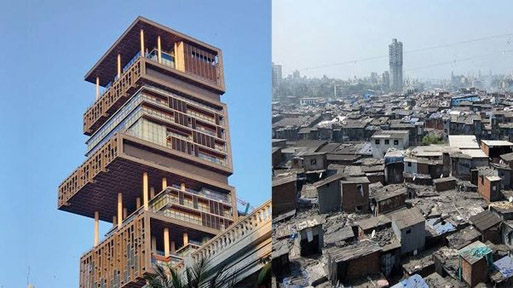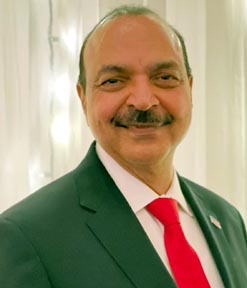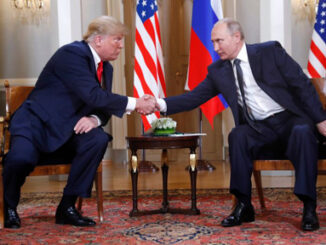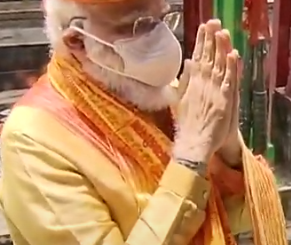
In 2021, Oxfam reported that the top 1% of India‘s population held 42.5% of the national wealth, while the bottom 50% held just 2.8%. In 2023, Oxfam report, “Survival of the Richest: The India story”, also says that between 2012-2021, just 5 per cent of Indians own more than 60 per cent of the country’s wealth, while the bottom 50 per cent of the population possess only 3 per cent of the wealth. The combined wealth of India’s 100 richest has touched $660 billion. Oxfam also adds that India has the world’s highest number of poor at 228.9 million.

Since gaining independence in 1947, India has experienced significant economic and infrastructure growth, yet rising inequality has become a persistent issue. While the country suffers from multiple crises such as poverty, hunger, illiteracy, unemployment, health calamities, and inflation, India’s billionaires continue to thrive by stealing public wealth. Besides the business tycoons getting rich, another story of rags to riches involves the politicians and high-ranking bureaucrats of India. They are getting rich by helping the billionaires steal or pay minimum for the public wealth.
India’s elite world-famous Billionaires, part of the 56 million filthy rich Indians, are living side by side with almost a billion poor and treat them as sub- humans who are a burden for the country.
It looks like Indian Leadership- political, religious and business- rather than being ashamed of this, are proud to have more than 800 million Indians living under extreme poverty & inhuman conditions. They have the insanity to say, “India is shining”.
A former diplomat, politician, author and thinker Pavan Varma wrote in his book “Being Indian” that in the Indian elite “there is a remarkable tolerance for inequality, filth and human suffering”. He adds that “concern for the deprived and the suffering is not a prominent feature of the Indian personality. The rich in India have always lived a life quite oblivious to the ocean of poverty around them”. Less than 10-15 minutes from every slum in any major city of India there are very expansive heavily guarded residential areas with houses, rather mini palaces, costing few million dollars to $2 Billion. Mukesh Ambani’s palacial house “Antilia” in Mumbai is one of the most expensive private residences in the world. One city: two universes.
Meanwhile, the poor in India are unable to afford even basic food to survive. In India, approximately 81.35 crore (810.3 million) people are receiving subsidized food under the Pradhan Mantri Garib Kalyan Anna Yojana (PMGKAY), “Prime Minister’s Food Security Scheme for the Poor.” This scheme provides free food grains, including rice, wheat, and coarse grains, to the beneficiaries barely enough just to keep them alive. Each eligible individual receives 5 kg of whole food grains per month, that they have to get it milled except for rice.. The scheme, which started during the COVID-19 pandemic in 2020, has been extended for five more years starting from January 1, 2024. The government has committed to spending approximately Rs. 11.80 lakh crore ($143.90 Billion) over this period to ensure the continued distribution of these food grains. Additionally, under the National Food Security Act (NFSA) of 2013, which forms the basis for many of these subsidies, about 75% of the rural population and 50% of the urban population are legally entitled to receive subsidized food grains at highly reduced prices.
The number of hungry Indians increased to 350 million in 2022 from 190 million in 2018. In 2023, India ranked 111 out of 125 countries on the Global Hunger Index (GHI), with the highest child-wasting rate in the world at 18.7 per cent, reflecting undernutrition and malnutrition. It indicates a “serious” level of hunger in the country. India’s GHI score was 28.7, showing minimal improvement since 2015. In 2014 India used to rank 55th on GHI. According to the Modi government’s own admission in the Supreme Court, widespread hunger resulted in 65 percent of the deaths among children under the age of 5 in 2022. Besides the growing child malnutrition during the Modi decade, India now has the world’s third highest number of children unvaccinated for measles in 2023, with 16 lakhs missing the vaccine, trailing only Nigeria and Democratic Republic of Congo, according to WHO-UNICEF estimates. India is among 10 countries contributing to 55% unvaccinated children globally.
In contrast, in 2024, India’s richest man, Mukesh Ambani, spent an estimated $500 million on the wedding of his younger son Anant with Radhika Merchant. The festivities lasted over six months and were attended by the wealthiest individuals, TV & film celebrities, famous artists, sports celebrities, social media influencers and politicians from around the world and India. This wedding was nothing but a circus with the main performers of course being the Ambani family, supported by Merchant family, Bollywood and Hollywood stars & singers, and watched by the rich business tycoons, CEO’s, famous artists, sports celebrities and politicians including PM Modi of India and the world. The social media influencers were posting 1-1/2 minutes of video showcasing the priced jewels, ultra luxury watches and outfits with price tags flaunted by women of Ambani family and the groom. It is being termed as the most expensive wedding by an individual citizen in the world. At the same time, Ambani’s vulgar display of wealth, unconstitutional power and misuse of his control over state and central governments are seen as an insult to the poor of India.
After independence, India pursued socialist policies aimed at reducing disparities. However, economic liberalization in the 1990s along with legalization and personification of crony capitalism and criminalization of politics, accelerated growth while exacerbating income inequality. Since 2014, under PM Modi, this trend intensified with supersonic speed by setting new records of inequality every day and has fueled wealth accumulation among the rich only. In 1991 there was 1 billionaire, in 2014 that number stood at 56 and as of 2024, India has 271 billionaires, making it the country with the third-highest number of billionaires in the world, after China and the United States (Forbes India), reflecting the concentration of wealth within a small elite group.
Since 2014, Modi’s policies of selling even profit-making public sector units (PSUs), existing public properties/infrastructure like airports, railway stations, and heritage properties like Lal Qila, along with new infrastructure development and digitalization initiatives, have been done at a bargain to his crony capitalist friends. This approach has propelled economic progress by bypassing marginalized communities. The COVID-19 pandemic further deepened the gap, with billionaires’ wealth surging even as millions faced job losses and poverty. Modi’s economic policies promoting business growth, while necessary, have not been accompanied by adequate social safety nets, increased spending on education, employment, affordable healthcare, and affordable housing for the 80% of Indians. This has created widening disparities such as social inequality, education inequality, healthcare inequality, employment inequality and housing inequality, in addition to the burgeoning income/financial inequality.
India’s neighbor China with the same population as India’s has per Capita GDP of $12,720.00 against India’s $2,240.00 and its population has much better standard of living than in India. At present the real rate of 6.1% at which Indian economy is growing will take more than 28.8 years for India to match China’s current per capita GDP. In the 1970s, both China and India shared several similarities, particularly in terms of their economic status and development strategies. China’s economic transformation began in earnest in 1976, that transformed China into the world’s second-largest economy, lifting hundreds of millions of people out of poverty and making it a significant global economic power.
In 2021, Oxfam reported that the top 1% of India’s population held 42.5% of the national wealth, while the bottom 50% held just 2.8%. In 2023, Oxfam report, “Survival of the Richest: The India story”, also says that between 2012-2021, just 5 per cent of Indians own more than 60 per cent of the country’s wealth, while the bottom 50 per cent of the population possess only 3 per cent of the wealth. The combined wealth of India’s 100 richest has touched $660 billion. Oxfam also adds that India has the world’s highest number of poor at 228.9 million.
According to “Income and Wealth Inequality in India, 1922-2023: The Rise of Billionaire Raj” in 2022-23, 22.6% of national income went to just the top 1%, the highest level recorded in our series since 1922, higher than even during the inter-war colonial period”. This monstrous income inequality has reached and even exceeded levels prevailing during the British Colonial Raj. This is the tragedy of an India under the “Billionaire Raj,” governed by “Billionaire’s” appointed Viceroy aka Prime Minister, Narendra Modi.
Oxfam India has said that the failure to tax rich people and corporations fairly exacerbates inequality as governments then resort to taxing the rest of society more. Heavy reliance on consumption taxes increases inequality and is regressive in nature because poor people pay a larger share of their incomes”. The bottom 50 per cent of the population at an All-India level pays six times more on indirect taxation as a percentage of income compared to top 10 per cent, it has said. Of the total taxes collected from these food and non-food items, 64.3 per cent of the total tax is coming from the bottom 50 per cent. A little less than two-thirds of the total GST is coming from the bottom 50 per cent, as per estimates, one-third from middle 40 per cent and only three to four per cent from the top 10 per cent.
To address the severe inequality causing untold miseries to over 70% of Indians, the country must balance growth with inclusive policies that ensure equitable access to resources and opportunities for all citizens, bridging the gap between the affluent and the impoverished. It must address income inequality, social inequality, healthcare inequality, education inequality, gender inequality, and housing inequality before wasting money to boost the personal egos of the current rulers, who only cater to the rich in India. Rather than focusing on bullet trains, temples, statues, and the unnecessary demolition of existing public buildings like the administrative buildings near the old Parliament House to cement his legacy as the maker of a new Hindu India by building a new Parliament and new residences for the Prime Minister, Vice President, and President at a cost of $2.64 billion, Modi should have prioritized educational institutes, hospitals, better public transport, housing for the poor, and better and cheaper rail services for the poor. India can land on the uncharted side of the moon but cannot abolish manual scavenging, which is nothing but the most insulting and heinous practice against human beings. Modi’s ill-conceived logic of creating his legacy with temples and statues to create Hindu supremacy rather a religious divide and infrastructure projects for the rich, has become a symbol of apathy and neglect towards the human sufferings of the poor and the minorities of India.
(Dave Makkar, a social activist, writes on politics and social issues. He is a regular contributor to The Indian Panorama. He can be reached at davemakkar@yahoo.com)





Be the first to comment